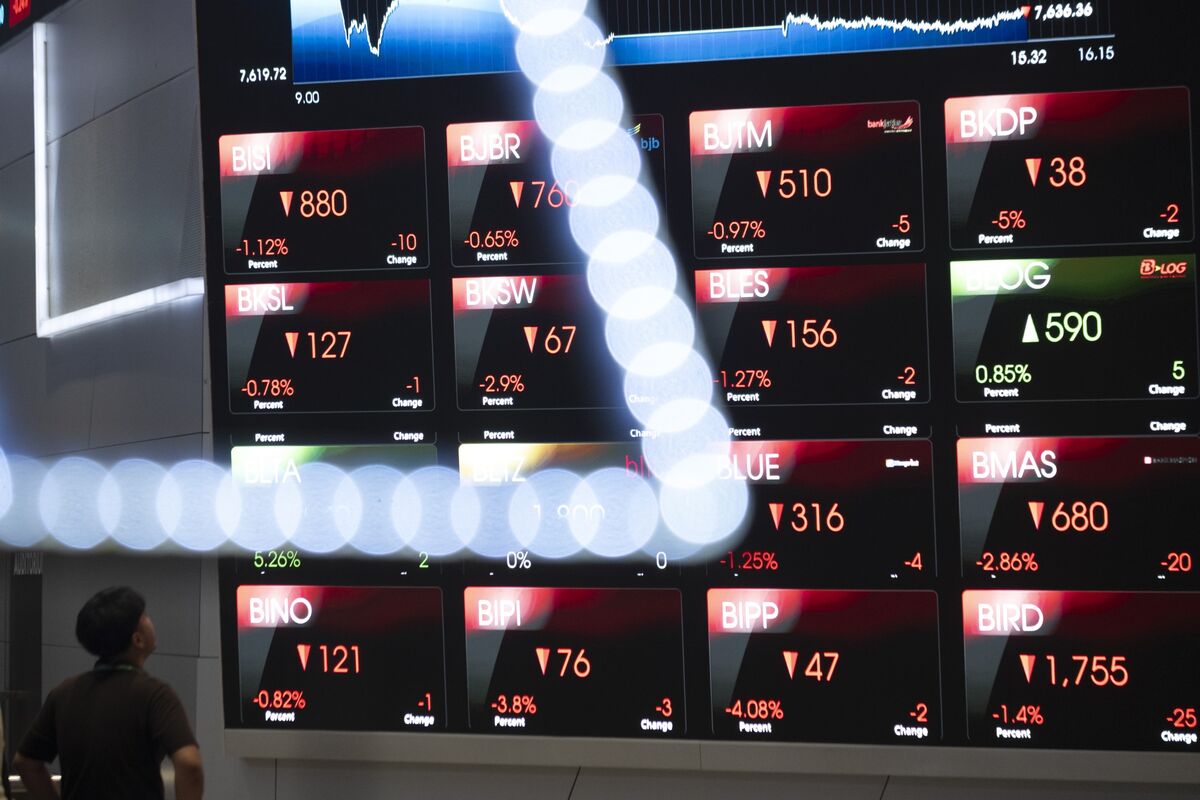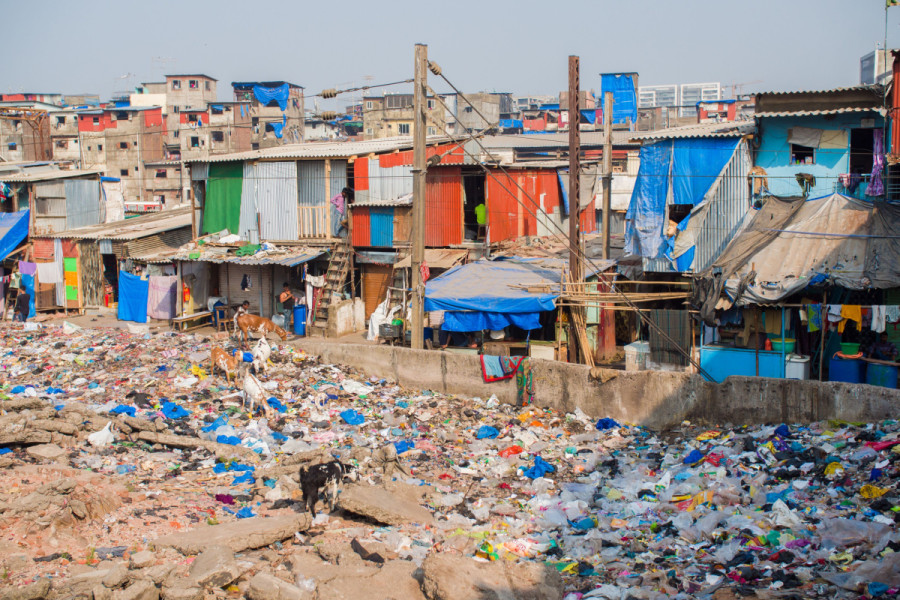SARS-CoV-2, the causative agent of Covid-19 was first declared as a pandemic in 2019. Since then, its devastating consequences have been observed worldwide, including in Nepal, causing hundreds of thousands of deaths and leaving many more people…
Author: admin
-

Who Is Laila Hasanovic? Meet Jannik Sinner’s Confirmed Girlfriend Amid Brooks Nader Drama
World No. 2 tennis star, Jannik Sinner has finally put an end to months of speculation surrounding his love life. After being linked to several high-profile names, the 24-year-old athlete confirmed that he is dating Danish model…
Continue Reading
-

‘Wait and see’ – Alex Carey shrugs off Stuart Broad’s Ashes jab
Australian wicketkeeper Alex Carey…
Continue Reading
-

MSCI’s Eye on Low-Free-Float Indonesian Stocks May Spur Outflows
Indonesian stocks may suffer outflows, according to Citigroup Inc., as MSCI Inc. flags potential changes to its index weightings for companies with certain shareholding structures.
The benchmark Jakarta Composite Index fell 1.9% on Monday and fluctuated on Tuesday, after the index provider sought feedback on how to estimate the free float of Indonesian securities, or the portion of shares available for trading in the open market. The change might reduce some companies’ weightings in key MSCI indexes.
Continue Reading
-

Stock Rally Cools in Asia, Copper Nears Record: Markets Wrap
(Bloomberg) — The record-setting advance in global equities took a breather in Asian trading, as investors braced for a flurry of earnings from megacap technology companies and policy announcements from major central banks this week.
MSCI’s Asia Pacific gauge dipped 0.1% as indexes in Japan and South Korea retreated from their all-time highs. An index in Shanghai broke above the psychological barrier of 4,000 for the first time in a decade. The moves came after US indexes had closed at all-time highs as Chinese and US trade negotiators lined up an array of diplomatic wins for Donald Trump and Xi Jinping to unveil at a summit this week.
“What we’re hoping is for some agreement with hard numbers,” Lorraine Tan, director of equity research for Asia at Morningstar, said in a Bloomberg TV interview. “We’re still going to be skeptical in effect that we do expect heightened risks from tariffs and geopolitics — there is no escape from that.”
Easing trade tensions have helped fuel a stock rally, while US companies have so far emerged largely unscathed by tariffs, protecting margins through price increases and cost cuts. That optimism faces a reality check this week as investors look to the Federal Reserve meeting for clues on the path of rate cuts, while major technology firms including Amazon.com Inc. and Microsoft Corp. reveal whether earnings momentum can be sustained.
On Wednesday and Thursday, five firms that account for about a quarter of the US benchmark — Microsoft Corp., Alphabet Inc., Meta Platforms Inc., Amazon.com and Apple Inc. — will report results. A gauge of the “Magnificent Seven” megacaps jumped 2.6% on Monday.
“With the Fed on track to cut rates, extending the run would appear to hinge on this week’s lineup of high-profile earnings releases,” said Chris Larkin at E*Trade from Morgan Stanley.
In other corners of the market, the yuan climbed to its strongest level in nearly a year, amid optimism over a potential China-US trade deal. A gauge of the dollar edged lower for a second day, while Treasuries were little changed. Gold held just below $4,000 an ounce as progress in trade talks sapped demand for haven assets.
The yen advanced to 152.24 a dollar Tuesday, outperforming its Group-of-10 peers, as markets welcomed supportive remarks from Japanese officials and cheered the outcome of a high-profile meeting between US and Japanese leaders in Tokyo.
What Bloomberg strategists say…
FX traders are reading it to be a reminder that the US administration would prefer a softer dollar. However, the Bank of Japan still needs to do their part this week and set up a rate hike for December. Otherwise USD/JPY could flip back to the 153 area, or higher.
— Mark Cranfield, Markets Live strategist. Click here for the full analysis.
Copper — a bellwether for global growth — advanced and traded roughly $60 shy of a record set last year as investors assessed the cooling of trade tensions between the US and China.
Technology stocks were in focus after Amazon.com planned to cut as many as 30,000 jobs, Reuters reported. Earlier, Qualcomm Inc. shares rose to their highest price in 15 months after unveiling chips and computers for the lucrative AI data center market, aiming to challenge Nvidia Corp. in the fastest-growing part of the industry.
On trade, Trump told reporters on Monday that “I really feel good” about a deal with China, after officials unveiled a slew of agreements to ease tensions.
While markets cheered the latest developments, some analysts cautioned the deal now teed up for Trump and Xi to sign in South Korea ignored thorny issues.
Fundamental fights over national security appeared untouched, they said, along with Trump’s stated core mission of rebalancing trade. Making that harder, Chinese investment into America remains heavily restricted.
“While these developments have lifted market spirits, analysts remain skeptical that the underlying issues — such as national security and tech competition — will be fully resolved,” said Fawad Razaqzada at City Index and Forex.com. “Nevertheless, traders have embraced the risk-on mood.”
Meanwhile, Trump hailed the US’s alliance with Japan, reaffirming ties with a longstanding partner and praising new Prime Minister Sanae Takaichi on her plans to ratchet up defense spending as the pair met in Tokyo. Trump and Takaichi signed a framework on critical minerals.
Takaichi is navigating implementation of a trade deal brokered under her predecessor that includes a nebulous pledge for Japan to fund $550 billion in US projects.
Corporate News:
Domino’s Pizza Enterprises Ltd. shares fell after the fast-food chain said it hasn’t received any takeover offer from buyout firm Bain Capital, refuting an earlier report that sent the stock surging. Nidec Corp. shares tumbled as much as their daily limit of 19% on Tuesday as the company was set to be removed from the Nikkei 225 Stock Average and was flagged for special oversight by the Tokyo Stock Exchange. CSL Ltd. plunged to the lowest in almost seven years after Australia’s biggest drugmaker postponed plans to spin off its vaccines business, as falling US flu immunizations deepen concern over a slowdown in its Seqirus unit. HSBC Holdings Ltd. reported third-quarter revenue that beat estimates, driven by its key wealth businesses, even as a $1.1 billion provision tied to the Bernard Madoff fraud cases weighed on earnings. Some of the main moves in markets:
Stocks
S&P 500 futures were unchanged as of 1:06 p.m. Tokyo time Nikkei 225 futures (OSE) fell 0.2% Japan’s Topix fell 0.6% Australia’s S&P/ASX 200 fell 0.3% Hong Kong’s Hang Seng was little changed The Shanghai Composite rose 0.2% Euro Stoxx 50 futures fell 0.2% Currencies
The Bloomberg Dollar Spot Index fell 0.1% The euro rose 0.1% to $1.1661 The Japanese yen rose 0.4% to 152.26 per dollar The offshore yuan rose 0.2% to 7.0967 per dollar The Australian dollar was little changed at $0.6562 Cryptocurrencies
Bitcoin fell 0.5% to $113,860.86 Ether fell 0.9% to $4,092.4 Bonds
The yield on 10-year Treasuries was little changed at 3.98% Japan’s 10-year yield declined 1.5 basis points to 1.650% Australia’s 10-year yield declined two basis points to 4.17% Commodities
West Texas Intermediate crude fell 0.1% to $61.24 a barrel Spot gold rose 0.1% to $3,987.86 an ounce This story was produced with the assistance of Bloomberg Automation.
–With assistance from Alex Gabriel Simon.
©2025 Bloomberg L.P.
Continue Reading
-

Lakers Guard Set to Miss Multiple Weeks With Injury
Los Angeles Lakers guard Gabe Vincent is set to miss the next 2 to 4 weeks with a sprained left ankle.
More news: Lakers Get G League Rights to Former First-Round Pick, Thunder Champ
Lakers guard Gabe Vincent is expected to miss 2 to 4 weeks after…
Continue Reading
-
PM reaffirms strong Pakistan-KSA brotherly ties – RADIO PAKISTAN
- PM reaffirms strong Pakistan-KSA brotherly ties RADIO PAKISTAN
- PM Shehbaz meets Saudi crown prince ahead of Future Investment Initiative conference Dawn
- Saudi Arabia extends $1 billion oil facility to Pakistan, renews $5 billion deposits Profit…
Continue Reading
-

China dreams of football glory at last… in gaming
As the global popularity of football eSports grows, China is vying for success on the virtual pitch, following decades of struggles in the real-life sport.
The Chinese Football…
Continue Reading
-

Jennifer Lawrence On Her Difficulties With Press Interviews
Jennifer Lawrence is peeling back the curtain on why she’s grown to not be so fond of speaking with the press.
During an interview with The New Yorker, the Die My Love star recalled telling Viola Davis, “Every time I do an interview, I…
Continue Reading
-

bivouac shelter by carlo ratti produces its own water and electricity
Carlo ratti’s alpine structure to debut at 2026 winter olympics
Carlo Ratti Associati introduces the self-sufficient wooden alpine bivouac shelter that can produce electricity and collect water on its own in the Alps. The project is a…
Continue Reading
